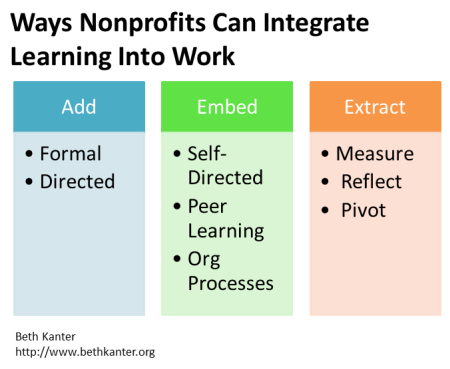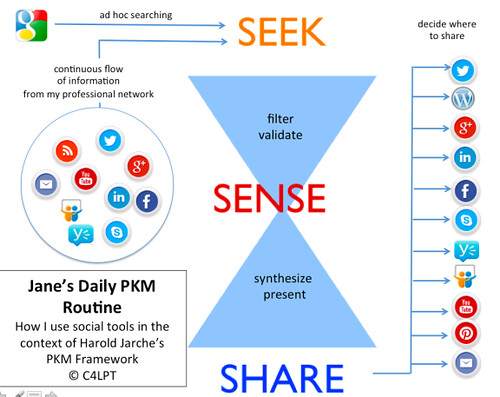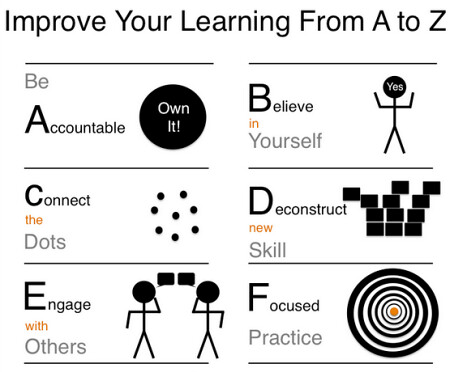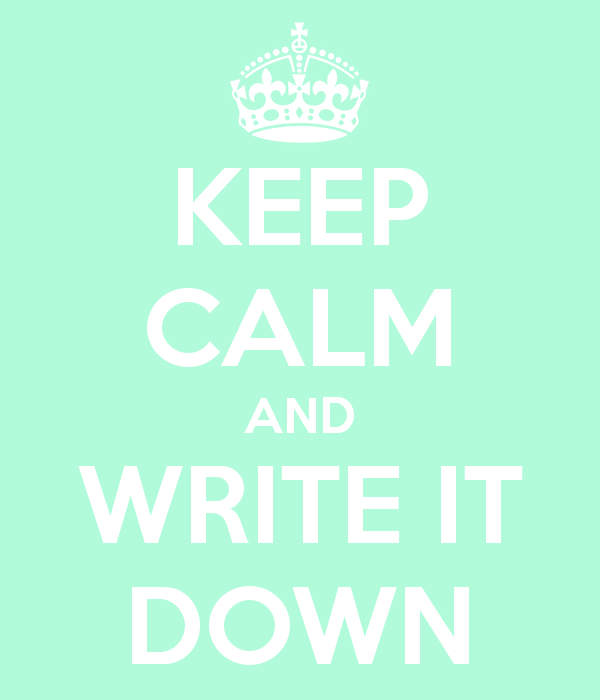
The Chronicle recently published an article with expert advice on what nonprofits should start doing in 2014. If you look down the list of tactical advice and tips, there is a bigger pattern that emerges. Nonprofits should integrate learning into their work, program delivery, and communications. As Charles Jennings suggests there are three different frameworks for doing this at work: Adding, Embedding, and Extracting.
Adding Learning to Work
He describes this option as sending staff to an outside workshop or seminar or enrolling in an online program. He points out that approach has value but, by adding activities is only assisting in the learning process. He suggests that design principle is that learning is something separate from work or ‘first we learn and then we work’. He does not feel this approach can leverage the organizational or personal mastery.
This is the type of “learning at work” or professional development that is common in the nonprofit sector. There are many half-day face-to-face workshops, conferences, or shorter webinars. These learning opportunities are primarily content-driven, providing information, examples, cheat sheets, tips, and resources to help an organization or an individual get ready to use a skill. The real learning comes in when they apply what they learned – if at all – after the webinar or workshop is over.
Embedding Learning in Work
Jennings points out that some organizations have extended beyond ‘adding’ learning to work and have put in place support so learning is ‘embedded’ in work. He goes on to describe some examples that may not be relevant to all nonprofits except very large ones. In thinking about this option, these are self-directed or group-directed learning opportunities. On an individual staff person level, this could be the process of setting up a content curation system for professional learning as described here. The process not only supports the nonprofits content marketing strategy, but also enhances staff expertise in a topic area related to the organization’s mission.

An excellent framework for applying embedded learning is Harold Jarche’s “Seek, Sense, Share.” Jane Hart describes how she uses this approach and social media tools for self-directed learning. Bryan Alexander calls it “daily information wrangling.”

Some people are naturally curious and self-directed learners. They are motivated to learn on their. Others have a preference for directed learning, a formal structured course. I feel that in age of too much complexity, connectivity, and flow of information, we need to get better at being self-direct learners. This infographic, “Improve Your Learning from A to Z” some great suggestions.
It is not just about an individuals self-directed learning but also groups of self-learners or peer learning cohorts that I design and facilitate as part of my training work. Taking it one step further are self-organized groups of self-learners or “peeragogy.” If you are interested in this learning style, an updated version of the handbook was released yesterday in honor of public domain day.
Self-organized learning groups can also happen inside of organizations, especially those that have adopted learning cultures.
Extracting Learning from Work
Jennings calls this the most powerful form of work place learning. He describes what the lean start up movement has termed “validated learning. ” He describes this as: ‘work then learn, then work in an improved way’. Learning is not only embedded in the workflow, but new learning is continually extracted from experiences and exchanges with colleagues, stakeholders and audiences. He references the “After Action Review” process.

I wrote up a description of the process that some nonprofits use to do an after action review. It requires attention to documentation and documentation skills – many times a difficult process for nonprofits that don’t view this important reflection process as part of the “getting the work done.” Here’s a few more techniques that nonprofits have used for extracting learning to improve what they’re doing.
How does your nonprofit integrate learning into your work? How do you as a nonprofit professional incorporate professional learning into your work?
Beth Kanter is a consultant, author, influencer. virtual trainer & nonprofit innovator in digital transformation & workplace wellbeing.
